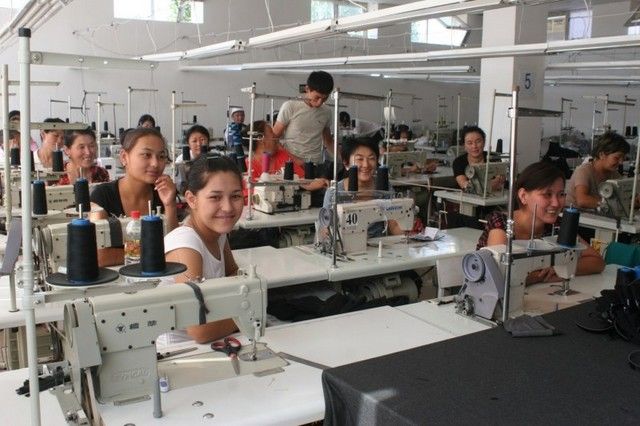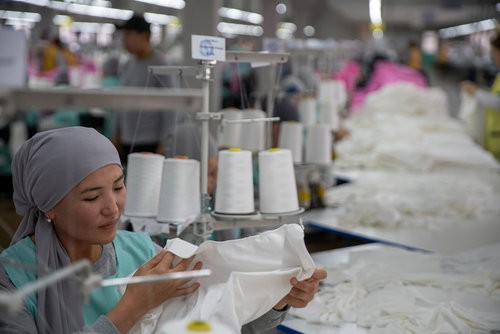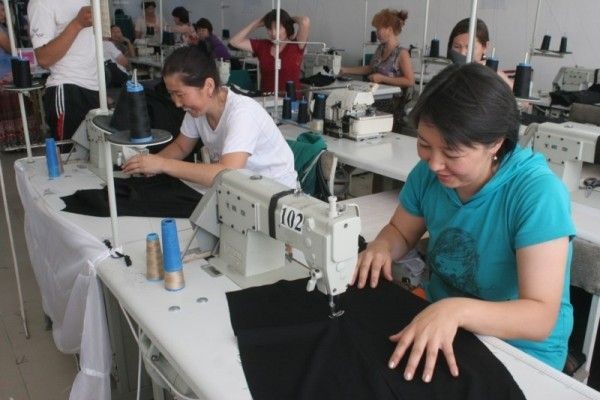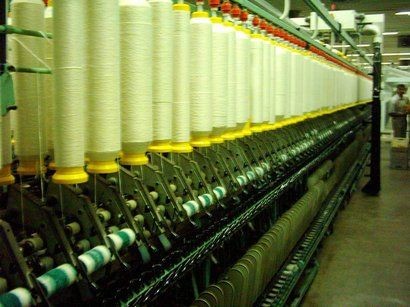BISHKEK (TCA) — To develop its textile industry, Kyrgyzstan plans to create a full cycle of industrial production. Local sewing enterprises are now importing accessories and fabrics, Kyrgyz Deputy Economy Minister Daniyar Imanaliev said on March 2 at the opening of the 9th International Trade Fair in Bishkek dedicated to products and equipment in the fashion industry.
The Trade Fair aims to strengthen business contacts and expand cooperation between companies working in the garment and textile industries. More than 50 domestic sewing, textile and handicraft enterprises, as well as representatives of companies from Uzbekistan, China, Russia, Turkey, and India are taking part in the Fair.
The light industry is one of the priority sectors of the Kyrgyz economy. Kyrgyzstan annually produces textile products worth $190 million and products worth $160 million are exported to Russia and Kazakhstan.
Kyrgyzstan’s sewing industry consists of small and medium-sized enterprises and provides about 160,000 jobs.
Due to the dynamic development of the garment industry, the “Made in Kyrgyzstan” label has gained a niche in the market of the Eurasian Economic Union, Imanaliev said.
Techno-parks
Construction of two techno-parks which will create from 7 thousand to 15 thousand jobs will begin this spring in Bishkek and in one of the cities (Sokuluk or Tokmok) in the Chui province, the head of the Kyrgyz Association of Light Industry Sapar Asanov said at a press conference in Bishkek. It is necessary to take into account the availability of the connection to utilities including electricity, water and sewerage.
The Government has allocated land for the techno-parks that will produce textile and clothing for the domestic market and for export.
In the future, it is planned to build industrial parks in other region of Kyrgyzstan.
Exports
Kyrgyzstan has increased the export of garment products up to $95.5 million last year. Garments make 7% of the country’s total export, the Kyrgyz State Committee for Industry, Energy and the Subsoil Use said.
This year, Kyrgyz sewing shops are loaded with orders from abroad, the number of sewing workshops is growing, and there is a lack of sewers.
According to the National Statistics Committee, however, since 2013 there has been a decline in the garment industry related to the global financial crisis, and as a result, a decrease in orders due to lower purchasing power in Kyrgyzstan’s main export markets — Russia and Kazakhstan.
More than 80% of the garment products in Kyrgyzstan are produced by individual entrepreneurs who work under patents and do not report to the National Statistical Committee. The Committee’s statistics also did not take into account the volume of apparel exports to Russia and Kazakhstan through Bishkek’s Dordoi wholesale market. Hence the difference between the figures reported by the State Industry Committee, the National Statistical Committee and the State Tax Service, which are now jointly working to optimize the registration of individual entrepreneurs.
New markets
Kyrgyz sewers are planning to enter new markets, and participate in fairs and exhibitions which will allow them increasing exports. The Kyrgyz sewing industry has found its niche in the Russian and Kazakhstan markets. In the near future, local sewers will start to export their products to Germany and Belarus.
Kyrgyzstan is now creating a value chain in the apparel industry. The Association of Light Industry (Legprom) intends to merge all production stages into a single scheme, starting from farmers who grow cotton to the sewing shops. It is also planned to create Kyrgyzstan’s export brand.
Thanks to a soft loan allocated by the Russian-Kyrgyz Development Fund, local Transtekstil corporation has built a modern factory for the production of knitted fabric inside Kyrgyzstan. Prior to joining the Eurasian Economic Union in August 2015, the corporation exported its products to Russia alone, but after the entry to the EEU it started exporting to Kazakhstan. The company is planning to start exporting to Belarus this month and to Germany in April.
There is also a socks factory in Bishkek which provides 250 people with jobs.
Healthy competition
The Legprom Association has managed to defend its positions within the EEU including tax preferences and working on the patent system. As a result, they managed to keep the sewing industry. Despite the crisis, ten local knitwear companies have bought new high-tech equipment, Legprom said.
New knitwear companies have started operating which creates a healthy competition.
The main problem now is the shortage of staff. Once the EEU customs borders were opened, many local specialists have left Kyrgyzstan for Russia and Kazakhstan. Today, however, clothing makers can earn the same money at home in Kyrgyzstan, Legprom says.
The sewing industry still needs to improve the skills of workers and upgrade production facilities and equipment.









